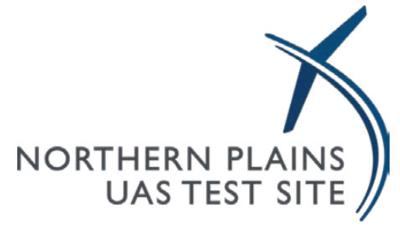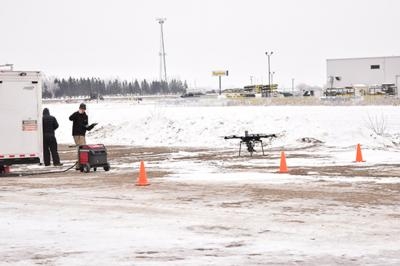Sun, Sep 20, 2020
This Infrastructure Will (First) Enable BVLOS Flights In Mckenzie And Williams Counties
The Northern Plains UAS Test Site (NPUASTS) has begun the initial stages of implementing infrastructure for North Dakota’s statewide UAS beyond visual line of sight (BVLOS) network.

The key site location chosen for this initial deployment of the BVLOS network is in the surrounding areas of Watford City and Williston, ND, due to the proximity of many potential use cases and existing state and local government infrastructure that can be leveraged for this deployment.
“We’re excited to begin the first stage of building this network in western North Dakota. It is ideally located in the heart of North Dakota’s oil and gas industry and covers a population center that will directly benefit from the network,” said Nicholas Flom, executive director of NPUASTS. “This means that even the very first stage of the network will be commercially viable.”
L3Harris Technologies and Thales USA, two leading aviation companies, have been selected to build out this baseline key site infrastructure. This infrastructure will enable BVLOS flights in McKenzie and Williams counties – with additional locations rolling out after the key site has been validated.
“The state of North Dakota’s Statewide BVLOS Network is truly the first of its kind,” said Todd Donovan, vice president of air traffic management at Thales USA. “This robust network, that safely and securely integrates UAS into the national airspace, will serve as an enviable model and be the catalyst for broader commercial UAS operations for years to come as it relies on a complete solution that addresses the FAA’s safety risk management process.”

Key site implementation is beginning immediately and will include extensive verification and validation system testing in coordination with the Federal Aviation Administration (FAA). Ensuring the safety and reliability of the network is essential as it will guide future improvements as the network is built out.
“System testing of the network is absolutely necessary for safety, and it will also allow us to perform use-case development flights to set the standard requirements for any aircraft seeking to fly on the network,” said Jim Cieplak, program manager of the statewide network. “Constantly checking for efficacy also means being prudent with the state’s investment. We are making sure the very best iteration of this technology is what we implement."
More News
LinxUs System Adds Capabilities for Data-Driven Operators Textron Aviation announced another option for operators processing their post-flight data, adding interoperability with GE>[...]
Aero Linx: The de Havilland Moth Club Ltd The de Havilland Moth Club evolved from a belief that an association of owners and operators of Moth aeroplanes should be formed to create>[...]
(Pilot) Inadvertently Applied Excessive Braking Action, And The Airplane Nosed Over Analysis: The pilot reported that, while landing at a remote, rough and uneven airstrip in a tai>[...]
“MCADT is committed to rapidly integrating armed first-person view drones into the FMF, enhancing small-unit lethality and providing organic capabilities that warfighters cur>[...]
From 2017 (YouTube Edition): Major Engine Supplier Joins Forces With Small Aircraft Manufacturer… GE recently made an agreement with Venom Aircraft to supply engines for the>[...]
 Citation Operators Get Another Flight Data Connection for QA
Citation Operators Get Another Flight Data Connection for QA ANN's Daily Aero-Linx (06.01.25)
ANN's Daily Aero-Linx (06.01.25) NTSB Final Report: Bellanca 8GCBC
NTSB Final Report: Bellanca 8GCBC Aero-News: Quote of the Day (06.01.25)
Aero-News: Quote of the Day (06.01.25) Classic Aero-TV: High-Speed Match-up - Venom and GE Rebirth A Legend
Classic Aero-TV: High-Speed Match-up - Venom and GE Rebirth A Legend




